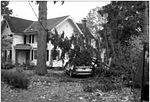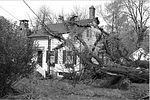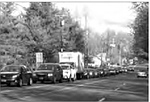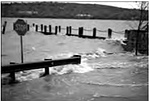Devastation in Hurricane Sandy's Wake
Hurricane Sandy battered the mid Atlantic coast Monday, October 29, into Tuesday, flooding coastal communities in its wake. Tropical storm force winds spread out 485 miles from the storm’s center, surging along Hudson River waterfronts and felling trees onto roads, power lines and buildings. The storm was responsible for extensive damage to a number of local homes, major power outages and road closures that paralyzed our area for well over a week.
The storm’s fury unfurled during a full moon, plunging thousands into the cold and dark and leaving behind submerged neighborhoods, flooded tunnels, homes damaged from falling trees, tangles of downed electrical wires, closed schools and businesses and long lines at the pump.
Climate scientist Klaus Jacobs with Lamont-Doherty Earth Observatory, one of the world’s leading centers on climate change, has repeatedly urged city and state officials to address what he sees as a real threat brought about by global climate change, sea level rise, coastal storm surges and flooding. Appointed by Mayor Bloomberg to the New York Panel on Climate Change, he also served on NY State’s Sea Level Rise Task Force and for seven years taught an “Environmental Hazards and Disasters” class at Barnard with Lamont scientist Dr. Lynn Sykes. Dr. Jacob, a Piermont resident, was himself swamped by the storm. To hear more of his travails go to the Lamont-Doherty website: www.ldeo.columbia.edu
Pictures of damaged Palisades houses, long gas lines, and Hudson waterfront taken by Kathy Sykes, David Gottlieb and Mary Tiegreen






